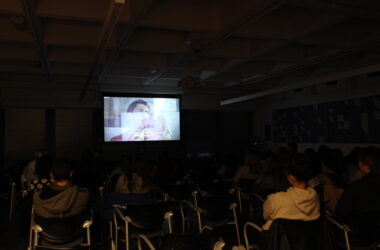Considering the combination of Tim Burton, Johnny Depp, and Lewis Carroll, it’s a real shame that Alice in Wonderland falls as flat as it does. The film is not dark enough to be Burton’s, the Mad Hatter is not distinctive enough to be Depp’s, and the story is not clever enough to be Carroll’s. And so, we must regretfully admit that our latest fall down the rabbit hole was not only bland, but a waste of time, money, and talent.
The story is confusing, because while the film is called Alice in Wonderland, it is not based on Carroll’s novel Alice’s Adventures in Wonderland. This particular Alice (Mia Wasikowska) is 10 years older than she was on her first adventure, and this time she tumbles into a land called Underland, presented as a similar yet distinct version of Wonderland. The plot has a loosely developed drive: Alice must slay the dreaded Jabberwocky (named after Carroll’s poem) – a dragon-like creature that looks right out of Harry Potter – but getting to that point feels rushed and choppy. In fact, the audience never has enough time to care about anything or anyone onscreen.
And of course, Alice in Wonderland is in 3D. What is it about this gimmicky technology that people are so crazy about? What could have been a decent movie feels like a simulator ride at Disneyland – all that was missing were the moving chairs. The dizzying shots in Alice are so concerned with looking cool in 3D (think objects popping out at the audience and things in the foreground going in and out of focus) that they take away from what’s actually going on in the scenes, further distancing the audience from the plot and the characters.
Burton is undoubtedly a fantastic director who has often delighted audiences with his dark imagination. However, it may be the case that technology is ruining him. Like in Willy Wonka and the Chocolate Factory, he again uses CGI to enhance his character’s features. Though aesthetically interesting, this technique causes Alice in Wonderland to have an artificial, air-brushed quality, instead of demonstrating Burton’s ability to transform actual spaces and people into strange gothic realities. Edward Scissorhands, Sleepy Hollow, and Sweeny Todd are great films because they present a twisted view of reality, rather than a digitally modified one.
Despite the anticipation of Depp’s Mad Hatter, this character also suffered due to the rushed nature of the film. It also took a while to comprehend the many accents he uses, and perhaps his character wasn’t that original: in his first scene he walks across the tea party table, and his movements and gestures reek of Captain Jack Sparrow.
Thank God for Helena Bonham Carter’s dead-on role as the Queen of Hearts. With a big head, white face, and endless bag of sour remarks, she manages to stay captivating throughout the film. A particularly hilarious scene is when she demands entertainment from her prisoners Tweedledee and Tweedledum, who she calls her “fat boys.” Often screaming “Off with his head!” followed by blank blinks, she is fabulous and the most Burtonesque thing in the film – by old Burton standards, that is.







